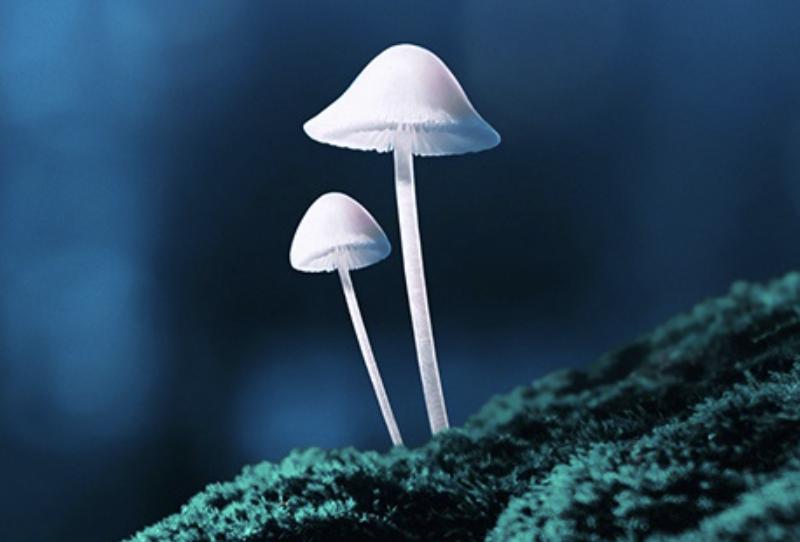Two terminally ill patients sued the FDA to allow them to use psilocybin in therapeutic treatments. Both are suffering from anxiety and depression caused by their cancer diagnosis. One of the litigants has teenage children and her doctor suggested that psilocybin therapy could help her cope.
Research at Johns Hopkins, among other institutions, has demonstrated that psilocybin under controlled therapeutic conditions, aids terminally ill patients coming to terms with their mortality and significantly relieves anxiety and stress. Studies report that as many as 80% of terminally ill patients felt significantly better after psilocybin treatment sessions; some after only a single session.
Recent studies with hallucinogenic drugs such as MDMA (street name, ecstasy), LSD, and mescaline have demonstrated breakthroughs in PTSD, anxiety, depression, and addiction. In fact, medical practitioners are expecting limited approvals for some of these drugs for use during therapeutic sessions.
Why?
It is believed that PTSD, anxiety, depression, and addiction are caused by a malfunctioning limbic system. The limbic system is a group of interconnected structures within the brain that are responsible for our emotional and behavioral responses.
The amygdala, a cluster of almond-shaped cells located near the base of each hemisphere of the brain, is the control center for the limbic system. The amygdala defines, integrates, and regulates our emotions, emotional behavior and, of course, stress and fear responses.
The prefrontal cortex is believed to serve as the regulator of the amygdala, and allows us to regulate our emotions, actions, and reactions. When things are going well, the prefrontal cortex acts as a control center that keeps reactive emotions and impulses in check and allows us to determine if the response is appropriate. For people suffering from anxiety, depression, addiction, and PTSD, the amygdala takes control from the prefrontal cortex. People with these diseases tend to be hypersensitive to criticism and other stimuli.
Brain studies suggest that somehow hallucinogenic drugs redirect the control back to the prefrontal cortex by building new neural connections between the amygdala and prefrontal cortex.
But the FDA refused to grant these litigants access, citing the Controlled Substances Act (CSA) of 1970. This act allowed the government to classify all regulated drugs into schedules. The schedule for the drug was based upon the substance’s medical use, potential for abuse, and safety or addictive properties. Marijuana, hallucinogens, and opioids were classed as Schedule 1 drugs, the most dangerous. At the time, marijuana and hallucinogens were perceived to have no medicinal value.
The act effectively stopped all research on hallucinogenic drugs.
But recent research suggests that marijuana can relieve anxiety and pain, and hallucinogens may prove to be a breakthrough for treating depression, anxiety, and PTSD.
Their lawsuit is an example of the delicate dance played by patients and the government. When Richard Nixon declared a “war on drugs” in 1970, the government excluded some of the most dangerous drugs, namely, alcohol, tobacco, and caffeine.
America learned from Prohibition that attempts to prohibit alcohol are futile. The war on drugs therefore was waged on the young and disenfranchised Americans (compare crack punishments to cocaine). It is a tough battle that Americans remain ambivalent about. Our tradition tends to be more punitive than rehabilitative.
Americans are questioning the restrictive classification of marijuana. Marijuana is now legally available in 21 states. According to a recent Pew Research survey, 91% of US adults favor some form of marijuana legalization. Before the 2022 election, 43% of US adults lived in a jurisdiction where adult use of marijuana had been legalized. President Biden recently pledged to overhaul America’s federal cannabis laws, starting by pardoning everyone convicted of simple marijuana possession at the federal level.
And even the devastating opioid crisis in America has another side. In 2014, in an effort to restrict opioid use in Florida, the government limited the number of opioids available to Florida. My husband was suffering excruciating pain from cancer that had metastasized in his bones. Despite having a valid prescription, we could not fill it because the pharmacies had limited supplies. Sometimes he suffered for over a week before we could get medication. Tragically, a friend’s son, who had been severely injured in an accident, had been unable to get his pain medications. One night, in desperate pain, he went to the street. He died from a fentanyl-laced street drug. The coroner confirmed that he was not an addict, only someone caught up in a broad-brush solution to a crisis.
It is complicated, and blanket classifications that help most can hurt others. There is no simple answer, of course, but I hope that these litigants can get their medication before it is too late.
Angela Rieck, a Caroline County native, received her PhD in Mathematical Psychology from the University of Maryland and worked as a scientist at Bell Labs, and other high-tech companies in New Jersey before retiring as a corporate executive. Angela and her dogs divide their time between St Michaels and Key West Florida. Her daughter lives and works in New York City.




Gary Saluti says
I am so glad that you saw fit to publish this report. I have been a long-term advocate for the use of these tools to not only address medical issues but hopefully in the future to be available under controlled conditions to aid secular issues as well and improving mankind in general. Thank you!
Angela Rieck says
I hope that this does produce benefits. Certainly the mental health community desperately needs it. I did read that the participants must be carefully screened as there is a very small, but real fear of psychosis developing from this therapy. But, like you, I can’t wait…Thank you for commenting